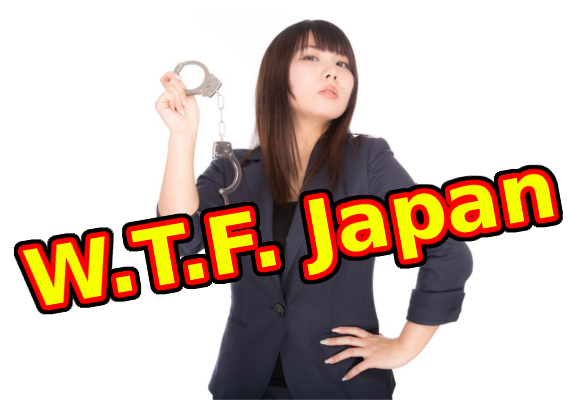
After living in Japan for a while, chances are you’ll be handcuffed to these new habits.
If you’ve spent time in Japan, then you may have noticed that your friends and family look at you a little funny when you come home. And it’s not because of your awesome new shirts with incomprehensible English written it on them, it’s because of the new little habits that you’ve picked up.
This has personally happened to me a bunch of times, and it usually takes a while for me to remember that, yeah, these new habits of mine weren’t things that I did before I went to Japan.
That’s why today we’re counting down the top five hardest Japanese habits to break. If you do any of these, then chances are you’ve spent some time in Japan before.
So let’s get to it! Starting off with…
Honorable Mention: Table manners
What is considered “appropriate” behavior at the table varies from culture to culture, but one thing that many Western countries don’t approve of is slurping and picking up your bowl to your mouth to drink soup.
But in Japan, slurping and bowl-picking-up are what you do in order to be polite!
While I personally never quite picked up the slurping habit, picking up the bowl to down the broth from ramen or udon is something that, only with a lot of reflection, I realized I never did before I went to Japan. Before I was enlightened, I used to always just use a spoon to scoop it up, bit by bit.
▼ How inefficient!
When you're eating #ramen, use the spoon only in the beginning to taste the broth. pic.twitter.com/TsxqBTNBLq
— Furious Spoon (@FuriousSpoon) June 18, 2015
Of course, because ramen and other Japanese foods are eaten all over the world, some people may be introduced to the Japanese way of eating them outside of Japan, thus making this only an honorable mention.
But still, anyone who has lived in Japan for an extended period of time will tell you that the only way to truly enjoy a bowl of ramen is to slurp up the noodles, then drink the broth. Anything else is just a waste.
#5. Actually obeying crosswalk signals
Hey! A habit that’s good to pick up!
We’ve seen before that crosswalk signals are part of the nicest sounds in Japan, perhaps adding to the reasons why people actually obey them.
I don’t know what it’s like in other countries, but in the U.S., crosswalk signals are generally seen as little more than a suggestion. If there are no cars immediately coming, then most Americans would just hop across the street, even with a red crosswalk signal.
In Japan though, I have never once flouted a crosswalk signal. I feel like the reason for this is because in Japan, waiting for crosswalk signals is just something that people do. When a whole group of strangers are patiently waiting for the green signal, you don’t want to be the only weird one running out into the road.
▼ Safe crossing is also something Japanese children learn at a young age,
and you sometimes see flags for kids to hold up as they cross the street.
阪急苦楽園口駅前には、黄色い横断旗がある。こんなの、久しく見てなかったよ。 pic.twitter.com/iaYHGNkgZs
— asakaho luis ryuta (@luis0117) December 5, 2016
This habit of waiting for the signal then carries over whenever I go home, and my friends laugh at me for obeying the signal like a chump. To this day I can’t cross the road with the red signal still up without feeling extremely uncomfortable.
#4. Mouth sounds
Even if you don’t manage to pick up the Japanese language while you’re in Japan, one thing you’re bound to pick up are Japanese people’s mannerisms while speaking.
And two of the most popular are: “heee” and “teeth-sucking.”
We’ve seen these sounds before in the top five most annoying sounds in Japan, but despite how annoying some may find them, you can’t argue with the fact that they’re everywhere… and extremely easy to pick up yourself.
For those unfamiliar, the “heee” sound is used to express anything from the mild surprise of “oh really?” to the life-changing shock of “oh my god I hope you’re joking!”
▼ Skip to 1:10 for a good “heee” explanation,
and to 2:50 for a barrage of “heee?!”
https://www.youtube.com/watch?v=1eqAhUG07Q8
As for the “teeth-sucking” sound, to make it yourself, clench your teeth together, then imagine you just saw someone scrape their knee and react appropriately.
▼ Listen to the sound in action here, though in Japan
it’s often used to denote thinking hard about something, not just pain.
Since both of these “mouth sounds” are are used in different situations than in Western countries, using them outside of Japan can lead to some awkward situations.
Saying “heee” to someone for anything less than Earth-shattering news may come off as sarcastic, and “teeth sucking” when you’re thinking hard about something will just get you confused looks.
▼ “Dude, is something wrong?
You keep making a sound like you scraped your knee.”
#3. Covering your mouth while laughing
The mouth habits don’t stop! Covering up your mouth is fairly common in Japan, whether you’re doing it with a surgical mask or your hands.
While many cultures outside of Japan couldn’t care less about seeing the inside of someone’s mouth or their teeth, Japanese people (and especially Japanese women) prefer not to show off their mouthy innards while laughing.
▼ The difference between the American “horse laugh” (showing off your teeth)
and Japanese “feminine laugh” is explained and shown in more detail here.
https://www.youtube.com/watch?v=eX6lpnbNlpo
Since laughing is a fairly common occurrence — taking into account all funny laughs, awkward laughs, and “please go away before I murder you” laughs — this is an easy habit to pick up. The only issue is, it’s mostly a women-only thing, so if you’re a guy and pick it up, you’re going to look a little strange, even in Japan.
▼ Although if your goal is to look as kawaii as possible,
this tweet says you’re headed in the right direction.
And when you go back to your home country where, presumably, people don’t usually cover their mouths when they laugh, it will come off as even stranger.
Whenever I cover my laughs back home in the U.S., people think I’m acting fancy, like a Victorian-era lady having tea in the garden. But no, I’m not trying to be fancy, I’ve just picked up a ladylike habit from Japan that won’t go away.
▼ Besides if I was a Victorian-era lady and had good teeth, you can bet
I’d go out of my way to show off those chompers when I laughed!
#2. Bowing all the time
Most people know that bowing is a part of Japanese culture, used like a handshake or as a way to apologize.
But those who have been to Japan know that the handshake/apologizing form of bowing is only a small part of all bowing. The rest consists of:
- Bowing intermittently while talking to someone to show you’re listening
- Bowing while on the phone with someone to show you’re listening
- Bowing when saying hello to someone as a greeting
- Bowing when a car stops for you at a crosswalk as a thank you
- Bowing when you’re in a car and another driver lets you go first
- Bowing pretty much anytime anywhere anyplace
To be fair, this type of bowing isn’t the same kind of deep bowing that many people think of. Instead it’s just a light bow, a bit of an extended nod, referred to as an eshaku.
▼ This video shows off eshaku (“slight bow”) with the comment “When passing by
someone in the office, you should give a light bow” showing just how common it is.
And since these eshaku happen so often, it’s super easy to pick up, but near impossible to let go. When everyone else is bowing while speaking on the phone, giving a small nod and saying hai every few seconds, you’re going to start doing it too, no matter how hard you resist.
Whenever I’m in the U.S. and friends or family are around me when I’m on the phone, I always accidentally let an eshaku or two slip out, and they tell me afterwards: “You know the person on the phone can’t see you bowing, right? They don’t care.”
▼ The fastest way to turn anyone into an emo Luke.
Me: Happy #StarWarsDay!
— Crystal Beth (@TheCrystalBeth) May 4, 2017
Co-worker: I don't care about that.
Me: pic.twitter.com/dNnApqHRSy
And the #1 hardest Japanese habit to break is…
.
.
.
.
.
.
.
.
.
.
1. The peace sign
This is it, the bubonic plague of Japanese habits because this thing spreads like wildfire to anyone not infected with it yet and will make sure that you never pose for a photo the same way again.
▼Everyone, from young women to old dudes,
gives the peace sign in photos.
まちCafe in A-FACTORY。
— 小野寺あきひこ (@onoderaakihiko) February 19, 2017
NPO法人男女共同参画をすすめる会のお招きで、青森市の今後の街づくりについて、公立大の学生さん達も交えて、2時間みっちり語り合いました。最後の記念写真、偶然A-FACTORYにおいでだった小林八戸市長!も御一緒に、みんなでピース^o^ pic.twitter.com/ZkWA6dxUyo
In Japan, putting up the peace sign is as ubiquitous to having your photo taken as smiling. And it’s a habit that you pick up very quickly, since if you’re the only one not giving the sign in a photo, you’re going to look incredibly out of place.
▼ Note how the only ones who don’t get a halo-smiley in the left photo
are the ones not making the peace sign. The barbarians!
While making the peace sign has been picking up popularity outside of Japan, it’s still nowhere near as universal as it is inside Japan. So when you go home, instead of blending in with everyone, your newfound habit will make you stick right out again.
▼ But hey, just embrace your new peace sign habit!
It’s impossible not to give a good smile when you do it.
There's something different about a man or a woman who has the right attitude---they just stick out from the rest of the crowd! pic.twitter.com/lBClV0Xf5R
— Johnny Esposito (@jjdjbtl) March 30, 2017
So there you have it, the top five hardest Japanese habits to break. Are there any other Japanese habits that have become a part of your life? Let us know in the comments, especially if any of them involve listening to the top five nicest sounds in Japan over and over again.
Top image: PAKUTASO (edited by SoraNews24)
W.T.F. Japan will be back next Thursday. In the meantime, say hi on Twitter and let me know if there’s any topics you’d like to see covered. See you next week!

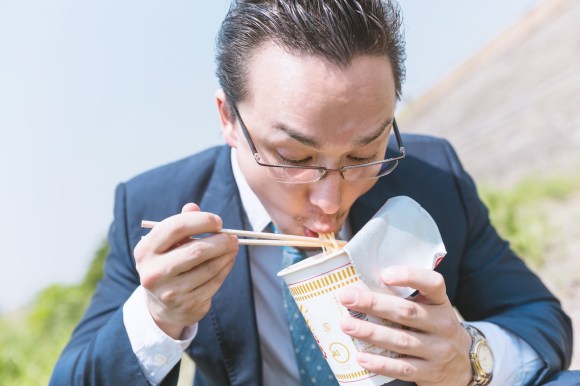
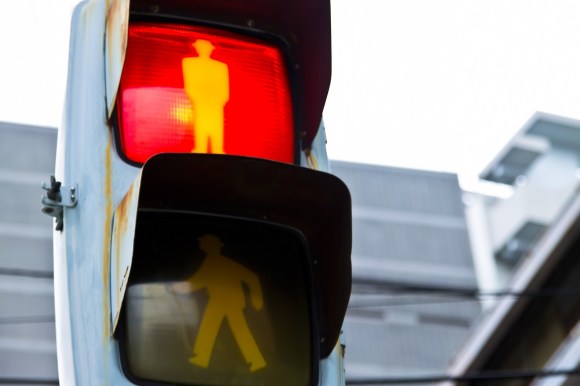
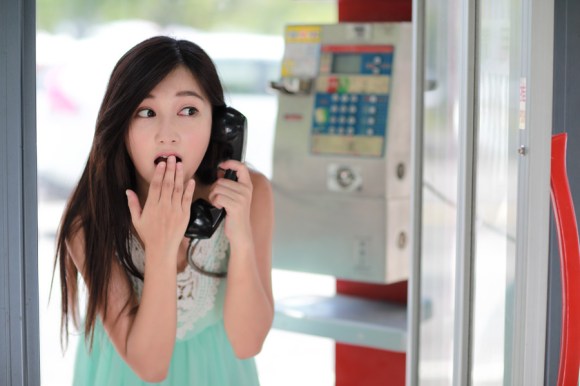
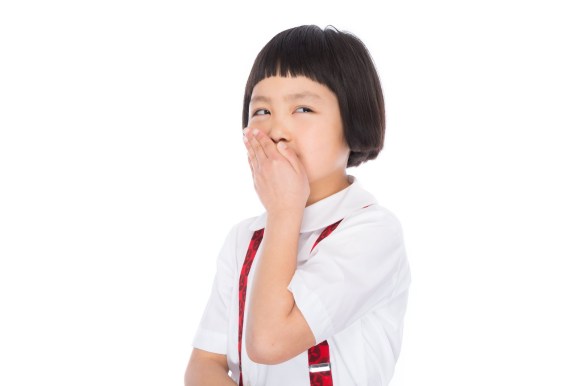
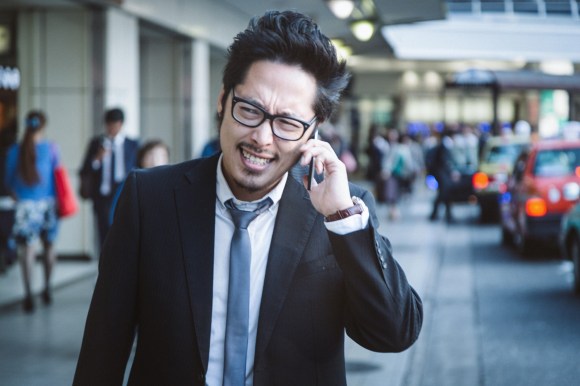
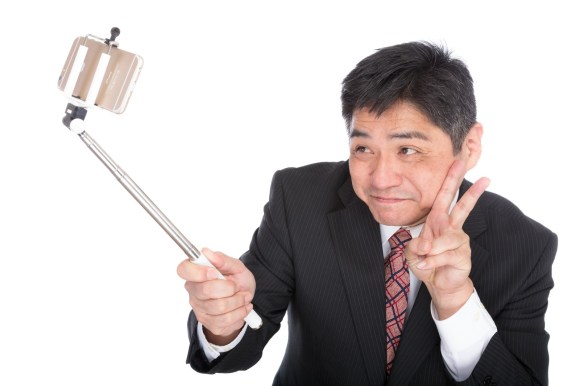
 W.T.F. Japan: Top 5 most annoying sounds in Japan 【Weird Top Five】
W.T.F. Japan: Top 5 most annoying sounds in Japan 【Weird Top Five】 W.T.F. Japan: Top 5 confusing Japanese hand gestures【Weird Top Five】
W.T.F. Japan: Top 5 confusing Japanese hand gestures【Weird Top Five】 W.T.F. Japan: Top 5 nicest sounds in Japan【Weird Top Five】
W.T.F. Japan: Top 5 nicest sounds in Japan【Weird Top Five】 W.T.F. Japan: Top 5 confusing Japanese Internet slang words 【Weird Top Five】
W.T.F. Japan: Top 5 confusing Japanese Internet slang words 【Weird Top Five】 W.T.F. Japan: Top 5 best Tamagotchi releases 【Weird Top Five】
W.T.F. Japan: Top 5 best Tamagotchi releases 【Weird Top Five】 Japan’s otoshidama tradition of giving kids money at New Year’s gets a social welfare upgrade
Japan’s otoshidama tradition of giving kids money at New Year’s gets a social welfare upgrade Dragon Quest Burgers and Slime drinks are coming to McDonald’s Japan【Video】
Dragon Quest Burgers and Slime drinks are coming to McDonald’s Japan【Video】 Survey finds more than 70 percent of Japanese children have an online friend
Survey finds more than 70 percent of Japanese children have an online friend What’s inside the McDonald’s Japan fukubukuro lucky bag for 2026?
What’s inside the McDonald’s Japan fukubukuro lucky bag for 2026? Studio Ghibli displays The Boy and the Heron Academy Award Oscar in Japan for a limited time
Studio Ghibli displays The Boy and the Heron Academy Award Oscar in Japan for a limited time Shogun arrested in Japan for being a peeping Tom
Shogun arrested in Japan for being a peeping Tom 7-Eleven Japan starts new temporary luggage storage service in over 300 branches
7-Eleven Japan starts new temporary luggage storage service in over 300 branches Pizza Hut Japan’s hot lucky bags are perfect for a New Year’s pizza party
Pizza Hut Japan’s hot lucky bags are perfect for a New Year’s pizza party Nintendo Wii U: Our Impressions of the New Console’s Biggest Launch Titles
Nintendo Wii U: Our Impressions of the New Console’s Biggest Launch Titles How to make a Big Mac in Tokyo at a fraction of the price with minimal effort【SoraKitchen】
How to make a Big Mac in Tokyo at a fraction of the price with minimal effort【SoraKitchen】 Starbucks Japan ready to get Year of the Horse started with adorable drinkware and plushies【Pics】
Starbucks Japan ready to get Year of the Horse started with adorable drinkware and plushies【Pics】 Cyberpunk anime meets traditional culture in Ghost in the Shell gold leaf Japanese changing screens
Cyberpunk anime meets traditional culture in Ghost in the Shell gold leaf Japanese changing screens 7 great places to see Mt. Fuji from without having to climb it
7 great places to see Mt. Fuji from without having to climb it Hello Kitty Choco Egg figures are an adorable trip through three periods of Japanese pop culture【Pics】
Hello Kitty Choco Egg figures are an adorable trip through three periods of Japanese pop culture【Pics】 7-Eleven Japan’s ramen-cooking robot whipped us up a bowl of noodles【Taste test】
7-Eleven Japan’s ramen-cooking robot whipped us up a bowl of noodles【Taste test】 We found possibly the quietest Japanese-style hotel in Tokyo’s bustling Shinjuku district
We found possibly the quietest Japanese-style hotel in Tokyo’s bustling Shinjuku district Sumo Sanrio! Hello Kitty and pals team up with Japan Sumo Association for new merch【Pics】
Sumo Sanrio! Hello Kitty and pals team up with Japan Sumo Association for new merch【Pics】 More Than a Capsule Stay: Why Solo Travelers Choose “global cabin Yokohama Chinatown”
More Than a Capsule Stay: Why Solo Travelers Choose “global cabin Yokohama Chinatown” Japan’s oldest largetooth sawfish in captivity back on display in Mie Prefecture
Japan’s oldest largetooth sawfish in captivity back on display in Mie Prefecture Disillusionment at Tsukiji’s tourist-target prices led us to a great ramen restaurant in Tokyo
Disillusionment at Tsukiji’s tourist-target prices led us to a great ramen restaurant in Tokyo Starbucks teams up with 166-year-old Kyoto doll maker for Year of the Horse decorations【Photos】
Starbucks teams up with 166-year-old Kyoto doll maker for Year of the Horse decorations【Photos】 Tokyo considering law requiring more trash cans following litter increase in heavily touristed area
Tokyo considering law requiring more trash cans following litter increase in heavily touristed area Tokyo’s Tsukiji sushi neighborhood asks tour groups to stay away for the rest of the month
Tokyo’s Tsukiji sushi neighborhood asks tour groups to stay away for the rest of the month Tokyo event lets you travel back in time, for free, to celebrate 100 years since Showa era start
Tokyo event lets you travel back in time, for free, to celebrate 100 years since Showa era start Sanrio theme park in Japan announces plans to expand into a Sanrio resort
Sanrio theme park in Japan announces plans to expand into a Sanrio resort Japan may add Japanese language proficiency, lifestyle classes to permanent foreign resident requirements
Japan may add Japanese language proficiency, lifestyle classes to permanent foreign resident requirements Stamina-destroying “Paralysis Noodles” are Tokyo’s newest over-the-top ramen innovation
Stamina-destroying “Paralysis Noodles” are Tokyo’s newest over-the-top ramen innovation Survey asks foreign tourists what bothered them in Japan, more than half gave same answer
Survey asks foreign tourists what bothered them in Japan, more than half gave same answer Japan’s human washing machines will go on sale to general public, demos to be held in Tokyo
Japan’s human washing machines will go on sale to general public, demos to be held in Tokyo Japan’s deadliest food claims more victims, but why do people keep eating it for New Year’s?
Japan’s deadliest food claims more victims, but why do people keep eating it for New Year’s? We deeply regret going into this tunnel on our walk in the mountains of Japan
We deeply regret going into this tunnel on our walk in the mountains of Japan Studio Ghibli releases Kodama forest spirits from Princess Mononoke to light up your home
Studio Ghibli releases Kodama forest spirits from Princess Mononoke to light up your home Major Japanese hotel chain says reservations via overseas booking sites may not be valid
Major Japanese hotel chain says reservations via overseas booking sites may not be valid Put sesame oil in your coffee? Japanese maker says it’s the best way to start your day【Taste test】
Put sesame oil in your coffee? Japanese maker says it’s the best way to start your day【Taste test】 No more using real katana for tourism activities, Japan’s National Police Agency says
No more using real katana for tourism activities, Japan’s National Police Agency says Starbucks Japan reveals new sakura drinkware collection, inspired by evening cherry blossoms
Starbucks Japan reveals new sakura drinkware collection, inspired by evening cherry blossoms Updated cherry blossom forecast shows extra-long sakura season for Japan this year
Updated cherry blossom forecast shows extra-long sakura season for Japan this year W.T.F. Japan: Top 5 strangest Japanese home goods【Weird Top Five】
W.T.F. Japan: Top 5 strangest Japanese home goods【Weird Top Five】 W.T.F. Japan: Top 5 most hilarious Japanese euphemisms 【Weird Top Five】
W.T.F. Japan: Top 5 most hilarious Japanese euphemisms 【Weird Top Five】 W.T.F. Japan: One year anniversary special! Top 5 W.T.F. Japan articles 【Weird Top Five】
W.T.F. Japan: One year anniversary special! Top 5 W.T.F. Japan articles 【Weird Top Five】 W.T.F. Japan: Top 5 crazy awesome features of Japanese restaurants 【Weird Top Five】
W.T.F. Japan: Top 5 crazy awesome features of Japanese restaurants 【Weird Top Five】 W.T.F. Japan: Top 5 “shikata ga nai” (“it can’t be helped”) situations in Japan【Weird Top Five】
W.T.F. Japan: Top 5 “shikata ga nai” (“it can’t be helped”) situations in Japan【Weird Top Five】 W.T.F. Japan: Top 5 creepiest Japanese animals 【Weird Top Five】
W.T.F. Japan: Top 5 creepiest Japanese animals 【Weird Top Five】 W.T.F. Japan: Top 5 hand gestures that Japanese people don’t understand【Weird Top Five】
W.T.F. Japan: Top 5 hand gestures that Japanese people don’t understand【Weird Top Five】 W.T.F. Japan: Top 5 strangest ways to be polite in Japan 【Weird Top Five】
W.T.F. Japan: Top 5 strangest ways to be polite in Japan 【Weird Top Five】 W.T.F. Japan: Top 5 kanji with ironic meanings【Weird Top Five】
W.T.F. Japan: Top 5 kanji with ironic meanings【Weird Top Five】 W.T.F. Japan: Top 5 offensive Japanese insults【Weird Top Five】
W.T.F. Japan: Top 5 offensive Japanese insults【Weird Top Five】 W.T.F. Japan: Top 5 biggest Japanese food challenges【Weird Top Five】
W.T.F. Japan: Top 5 biggest Japanese food challenges【Weird Top Five】 W.T.F. Japan: Top 5 most confusing Japanese compound words【Weird Top Five】
W.T.F. Japan: Top 5 most confusing Japanese compound words【Weird Top Five】 W.T.F. Japan: Top 5 strange Japanese office occurrences【Weird Top Five】
W.T.F. Japan: Top 5 strange Japanese office occurrences【Weird Top Five】 W.T.F. Japan: Top 5 crazy things about Japanese supermarkets 【Weird Top Five】
W.T.F. Japan: Top 5 crazy things about Japanese supermarkets 【Weird Top Five】 W.T.F. Japan: Top 5 reasons sleeping on the floor Japanese-style is awesome 【Weird Top Five】
W.T.F. Japan: Top 5 reasons sleeping on the floor Japanese-style is awesome 【Weird Top Five】 W.T.F. Japan: Top 5 craziest Japanese certification exams 【Weird Top Five】
W.T.F. Japan: Top 5 craziest Japanese certification exams 【Weird Top Five】
Leave a Reply